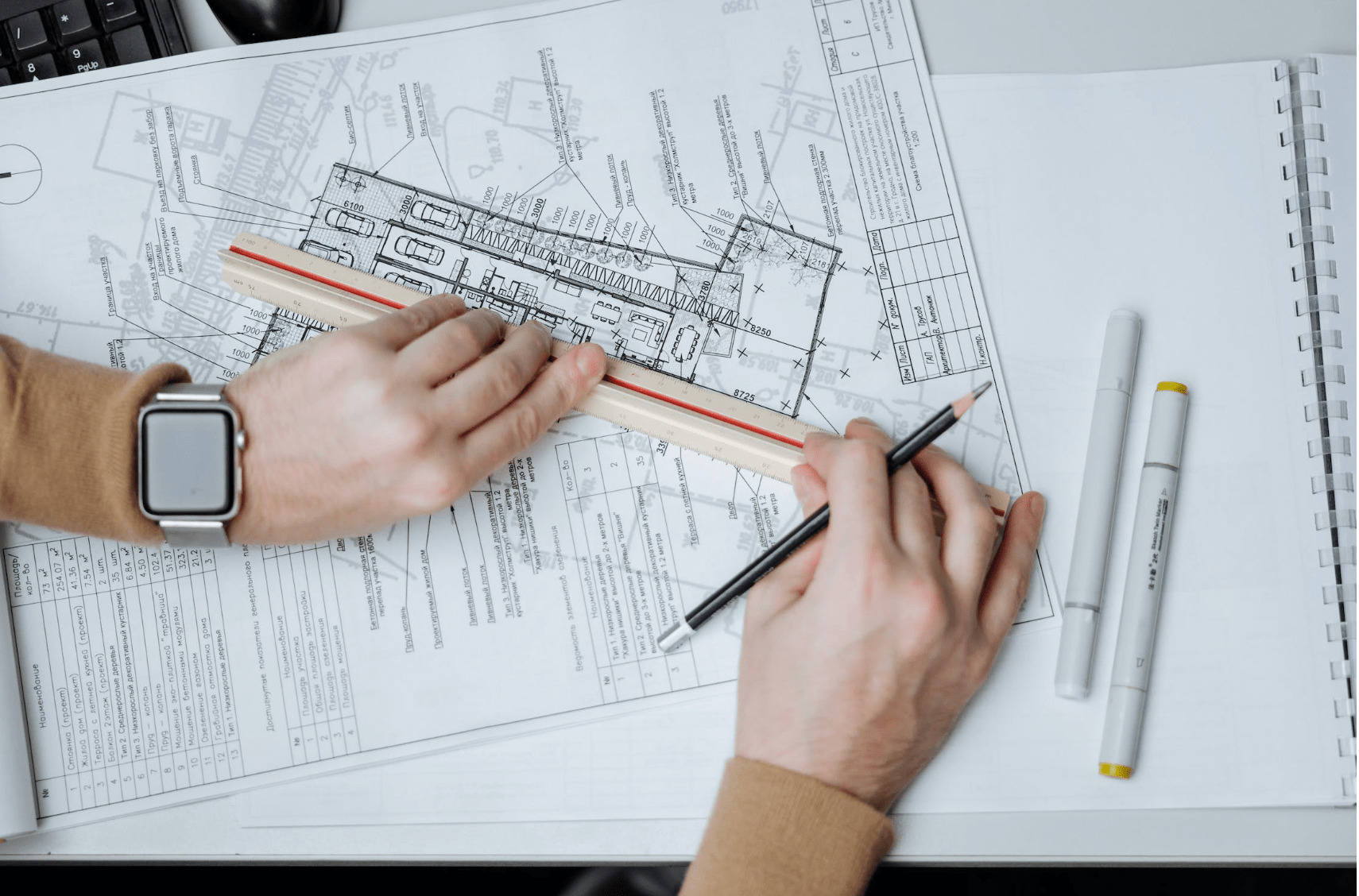Understanding the Diverse Occupation Paths Available for Aspiring Architect
As a hopeful Architect, you have a world of career courses waiting for you. Each path supplies special difficulties and opportunities to use your imagination and technical expertise. Whether you're attracted to standard architecture or the nuances of sustainable style, there's a niche that lines up with your interests. Recognizing these varied options can shape your professional trip, but which instructions will you choose to check out initially?
Conventional Design: Creating Frameworks and buildings
Conventional design concentrates on developing buildings and structures that blend performance with aesthetic charm. As you discover this area, you'll value the detailed balance in between kind and objective. You'll find out to attract ideas from historical designs, incorporating elements like balance, products, and craftsmanship. Your layouts can mirror social heritage, showcasing local customs while meeting modern-day requirements.
You'll develop skills in preparing, model-making, and site analysis, permitting you to picture and interact your ideas successfully. Engaging with clients, you'll need to comprehend their vision and equate it into feasible layouts.
Furthermore, building codes and sustainability practices are important in your job, guaranteeing your frameworks are secure and eco friendly. As you grow in your job, you'll discover opportunities in residential, industrial, or perhaps restoration jobs, each offering distinct obstacles. Embracing typical design paves the means for a meeting profession that pays tribute to the past while shaping the future.
Urban Preparation: Shaping Communities and Public Spaces
As an ambitious Architect, you can play a vital duty as a metropolitan organizer, transforming just how neighborhoods engage and function. By utilizing area interaction approaches, you'll assure that homeowners have a voice fit their atmosphere. Plus, integrating lasting layout concepts will certainly assist produce rooms that not just fulfill today's demands yet additionally protect the future.
Function of Urban Planners
While numerous might assume of engineers as the sole dreamers behind structures, urban planners play an essential function in forming the more comprehensive landscape of neighborhoods and public rooms. By working together with different stakeholders, you'll help design parks, transportation systems, and domestic areas that promote social interaction and accessibility. Your know-how in spatial design and neighborhood characteristics permits you to visualize future development while maintaining social heritage.
Community Involvement Approaches
Efficient neighborhood involvement approaches are vital for metropolitan organizers to assure that the voices of residents are heard and valued in the planning procedure. To foster purposeful dialogue, you ought to prioritize open online forums and workshops where neighborhood participants can share their concepts and problems. By proactively including and paying attention comments, you'll develop rooms that mirror the area's demands, ultimately leading to more lasting and effective urban environments.
Sustainable Design Concepts
When developing metropolitan rooms, incorporating sustainable design concepts is vital for creating settings that prosper both environmentally and socially. Take into consideration incorporating eco-friendly spaces, like gardens and parks, to boost biodiversity and enhance air quality.
Creating with water preservation in mind is additionally essential-- think of rainfall gardens and permeable surfaces to manage stormwater. Involving area participants during the preparation procedure warranties that the areas you produce satisfy their needs and encourage social communication. By welcoming these concepts, you'll contribute to vivid, sustainable metropolitan landscapes that profit everyone.

Landscape Architecture: Developing Lasting Outside Environments
As you discover landscape design, you'll discover crucial layout principles that develop functional and gorgeous outdoor areas. Sustainable techniques play an essential function in guaranteeing these environments thrive while reducing environmental effect. And also, you'll discover a variety of job possibilities that enable you to make an actual difference in just how people connect with nature.
Style Concepts in Landscape
Comprehending layout principles in landscape style is necessary for creating lasting exterior atmospheres that integrate with nature. You'll need to contemplate aspects like percentage, equilibrium, and scale to assure your designs feel natural and inviting. Incorporating native plants not just boosts biodiversity but likewise lowers water usage, making your landscape durable. Consider the flow of room and just how people communicate with it; paths and seating locations need to invite exploration and relaxation. Additionally, take note of seasonal modifications, creating with products that enhance the surroundings year-round (Architect). By prioritizing sustainability and visual appeals, you can produce outside areas that improve the community and promote well-being. Embracing these principles will set a solid structure for your job in landscape style.
Sustainable Practices Summary
Sustainable practices in landscape architecture not just concentrate on visual appeals but likewise focus on environmental wellness and resource preservation. You can make spaces that advertise soil wellness, such as making use of organic materials and exercising permaculture principles. Ultimately, these methods ensure your designs profit both individuals and the atmosphere for years to come.
Profession Opportunities Expedition
With a strong foundation in lasting methods, landscape design uses a range of career paths that allow you to make a meaningful effect on the atmosphere. Urban planners frequently work together with landscape engineers to develop environment-friendly areas in metropolitan settings, enhancing city livability. If you're enthusiastic regarding education and learning, think about coming that site to be a landscape architecture teacher, motivating future generations.
Lasting Layout: Concentrating on Eco-Friendly Practices
As you explore your occupation in architecture, accepting eco-friendly methods can establish you apart in a competitive field. Lasting style focuses on creating buildings that reduce environmental influence while improving owner well-being. By integrating sustainable materials, energy-efficient systems, and lasting building methods, you'll add to a greener future.
Beginning by getting knowledge of eco-friendly certifications like LEED or BREEAM, which can reinforce your qualifications. Consider exactly how all-natural light, ventilation, and thermal efficiency can enhance layout. Work together with designers and environmental Visit This Link experts to introduce solutions that decrease waste and conserve resources.
Do not neglect the importance of community involvement-- appealing neighborhood stakeholders can motivate designs that harmonize with the environment. As clients increasingly focus on sustainability, your expertise in environmentally friendly methods will certainly not just attract projects but also satisfy your passion for accountable design. Accept this crucial aspect of the occupation, and watch your career grow.
Historic Conservation: Securing and Bring Back Social Heritage
While you begin on your architectural trip, think about the necessary duty of historical preservation in maintaining our cultural heritage. This field focuses on the protection and restoration of substantial structures, websites, and structures that inform the tales of our past. By participating in historic conservation, you'll aid guard the building legacy that shapes neighborhood identification.
As a historic conservation Architect, you'll evaluate historic importance and analyze the problem of structures. You'll function closely with preservationists and historians to ensure authentic reconstruction methods are employed. This job path permits you to blend creative thinking with research study, enabling you to design options that respect initial products and craftsmanship.
Your job not only adds to sustainability by reusing existing buildings yet likewise promotes a feeling of pride within areas. Accepting this course will assist you become a guardian of history, maintaining the stories and looks that enrich our lives.
Inside Style: Enhancing Indoor Spaces
Historic conservation and indoor architecture both share a commitment to improving the constructed environment, but they concentrate on various aspects. While historic conservation stresses preserving a framework's historical and cultural value, indoor architecture zeroes in on enhancing interior rooms for functionality and anchor aesthetic appeals.
As an aspiring Architect, you'll discover that interior architecture enables you to mix creativity with technical skills. You'll develop areas that not just look excellent yet additionally promote comfort and efficiency. This area includes understanding how light, color, and materials communicate within an area, impacting state of mind and functionality.
You'll service different tasks, from residential homes to commercial workplaces, ensuring that each environment fulfills the demands of its occupants. By prioritizing customer experience, you can change insides right into practical and inspiring spaces, making a considerable effect on how individuals communicate with their surroundings. Embrace the opportunity to boost interior atmospheres and shape the way individuals live and function.
Industrial Design: Combining Capability With Visual Appeals
Industrial layout plays an essential duty in creating items that flawlessly mix looks with performance, guaranteeing that what you utilize daily is not just visually appealing yet likewise useful. As an aspiring Architect, you might immerse on your own in this field, concentrating on creating everything from furnishings to consumer electronic devices. Your work involves recognizing individual needs, products, and manufacturing procedures, allowing you to develop ingenious solutions that improve everyday experiences.
In commercial design, you'll typically team up with designers, marketing experts, and suppliers, guaranteeing that your layouts are not just lovely but likewise feasible. You'll learn to balance kind and feature, prioritizing usability without compromising design. By sharpening your skills in sketching, 3D modeling, and prototyping, you'll be fully equipped to bring your concepts to life. This career path provides a dynamic atmosphere where creative thinking meets functionality, making it a gratifying selection for designers curious about shaping the products of tomorrow.
Regularly Asked Inquiries
What Educational Qualifications Do I Need to Come To Be a Designer?
To become an architect, you'll require an expert degree in architecture, generally a Bachelor's or Master's. In addition, you'll need to complete an internship and pass the Architect Registration Examination to exercise legally.
Exist Accreditation Demands for Different Building Profession Paths?
Yes, there're qualification demands for various architectural courses. Architect. You'll need to pass tests, total internships, and often pursue specialized training, relying on your selected emphasis, like landscape architecture, city design, or historical conservation
What Software Program Skills Are Essential for Designers Today?

How Can I Gain Practical Experience While Researching Design?
You can obtain functional experience by interning at architectural companies, taking part in design competitors, volunteering for area jobs, or teaming up with classmates on real-world projects. These possibilities boost your skills and build beneficial links in the market.
What Work Opportunities Exist Outside Typical Design Firms?
You can discover different job opportunities outside typical architecture companies, like urban planning, interior style, landscape architecture, building and construction monitoring, genuine estate development, and even duties in sustainability consulting. Each offers distinct obstacles and benefits.
Whether you're attracted to conventional style or the subtleties of sustainable style, there's a niche that straightens with your interests.When creating city spaces, incorporating sustainable style principles is essential for developing environments that flourish both ecologically and socially.As you check out landscape style, you'll uncover important style concepts that develop practical and stunning exterior rooms.Understanding design principles in landscape architecture is important for developing lasting exterior environments that harmonize with nature.In commercial layout, you'll often team up with engineers, makers, and marketing professionals, guaranteeing that your designs are not just attractive yet likewise practical.